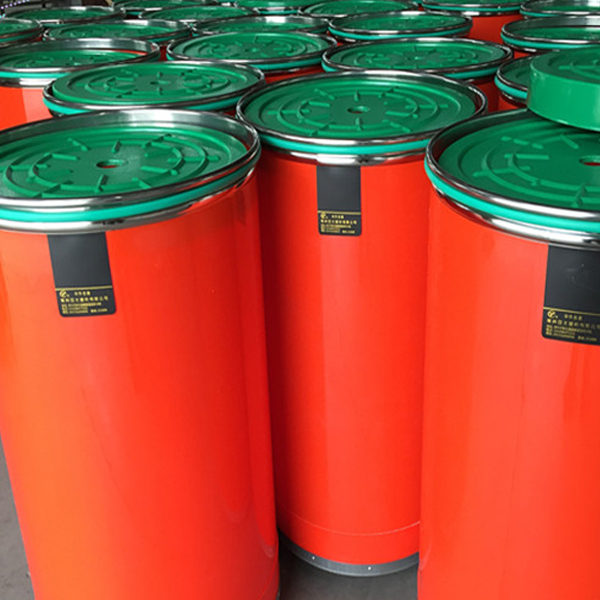In the textile industry, sliver cans are essential components in the spinning process. These containers hold and transport slivers of fibers from the carding and drawing stages to the roving and spinning frames. Production efficiency can be increased and considerable cost savings can result from effective sliver can management. This article outlines detailed strategies for optimizing the use of sliver cans to reduce costs in textile manufacturing.
Understanding Sliver Cans
Sliver cans are cylindrical containers, usually made of metal or plastic, designed to hold slivers of fibers. To accommodate varied spinning phases, they are available in a range of diameters and capacities. Effective management involves ensuring the correct quantities, proper maintenance, and efficient integration into the production workflow.
Strategies for Cost-Efficient Use of Sliver Cans
Optimal Inventory Management
Maintaining an optimal inventory of sliver cans is crucial to avoid unnecessary expenses and ensure smooth production.
- Real-time Tracking: Install a system that tracks the movement and consumption of silver cans in real time using barcodes or RFID tags. This technology helps track each can’s location and status, preventing losses and ensuring availability when needed.
- Demand Forecasting: Analyze production schedules and historical data to forecast future demand for sliver cans. This predictive approach helps in ordering the right quantity of cans, avoiding both overstocking and understocking.
- Just-in-Time Inventory: Adopt a just-in-time (JIT) inventory approach to minimize storage costs. By receiving sliver cans just as they are needed in the production process, you can reduce the capital tied up in inventory and the space required for storage.
Standardization of Sliver Can Sizes
Standardizing sliver can simplify logistics, reduce costs, and enhance compatibility with various machines.
- Assessing Needs: Conduct a thorough evaluation of the requirements at different production stages to determine the optimal sizes for sliver cans. This involves understanding the volume of slivers produced and the capacity needed for efficient handling.
- Implementing Standards: Develop and enforce standards for sliver can sizes across the production facility. This standardization can simplify ordering, reduce the variety of spare parts needed, and make training more straightforward.
- Vendor Coordination: Work closely with suppliers to ensure a steady supply of standardized sliver cans. Long-term partnerships with suppliers may also result in more favorable terms and first-rate assistance.
Maintenance and Quality Control
Regular maintenance and quality control of sliver cans are vital to prevent production disruptions and extend their lifespan.
- Regular Inspections: Plan on doing routine inspections to look for damage, deformation, or wear and tear. Early problem-solving can save expensive breakdowns.
- Cleaning Protocols: Implement strict cleaning protocols to remove any fiber residues that can affect the quality of slivers. Regular cleaning ensures that the slivers remain uncontaminated and maintain their integrity.
- Repair and Replacement: Establish a repair and replacement program for damaged or worn-out sliver cans. This program should include guidelines on when to repair versus when to replace a can, balancing cost and performance considerations.
Efficient Workflow Integration
Integrating sliver cans efficiently into the production workflow can streamline operations and reduce costs.
- Layout Optimization: Design the layout of the production floor to minimize the distance sliver cans need to travel between stages. An efficient arrangement lowers handling times and personnel expenses while increasing total productivity.
- Automated Handling: To move silver cans between operations, invest in automated handling technologies like conveyor belts or automated guided vehicles (AGVs).Automation results in regular and dependable processes by lowering the need for manual work and the possibility of human mistakes.
- Buffer Zones: Create buffer zones where sliver cans can be temporarily stored to ensure a continuous flow of materials and prevent bottlenecks. These zones act as intermediate storage areas, balancing supply and demand in the production line.
Training and Workforce Management
Effective labor management and training are essential for using silver cans effectively.
- Training Plans: Create thorough training plans that include the use, upkeep, and storage of silver cans. Inform staff members of the value of managing sliver cans properly and the recommended procedures to adhere to.
- Performance Monitoring: Monitor the performance of employees in managing sliver cans. Provide regular feedback and incentives for improvements. Recognizing and rewarding good practices can motivate employees to maintain high standards.
- Cross-Training: To maintain adaptability and continuity in operations, cross-train personnel in various jobs. This practice ensures that the absence of key personnel does not disrupt the workflow.
Recycling and Waste Reduction
Significant financial savings can result from encouraging recycling and minimizing trash.
- Efficient Usage: Train employees to use sliver cans efficiently, avoiding overfilling or underfilling. Proper usage reduces waste and maximizes the lifespan of each can.
- Recycling Programs: Establish recycling programs for damaged or worn-out sliver cans. Partner with recycling firms to ensure that materials are reused or repurposed, reducing environmental impact and saving costs.
- Sustainable Materials: Consider using sliver cans made from sustainable materials that can be easily recycled or have a longer lifespan. Although durable materials may cost more upfront, they can save money over time.
Conclusion
Proper arrangement and utilization of sliver cans in the textile industry can lead to substantial cost savings and increased efficiency. By focusing on optimal inventory management, standardization, maintenance, efficient workflow integration, workforce training, and waste reduction, textile manufacturers can enhance their production processes and achieve significant financial benefits. Although putting these techniques into practice calls for coordination between several departments, the benefits in terms of cost savings and operational effectiveness make the investment worthwhile.
Incorporating these practices into your textile manufacturing process can transform sliver management from a mundane task into a strategic advantage. By treating sliver cans as critical components rather than simple containers, you can unlock new levels of productivity and cost efficiency in your operations.

